Autumn gardening: preparing plants (fruit trees, berry and flowering shrubs) for winter
Autumn has come ... The last flowers are still showing on the site, winter varieties of apple and pear trees are hanging on the trees, someone has not yet dug up the carrots and put them in storage. But harvesting is not the end point.
What is required from a gardener to properly prepare a garden for winter? What activities are included in the autumn care of trees and shrubs? Let's figure it out!
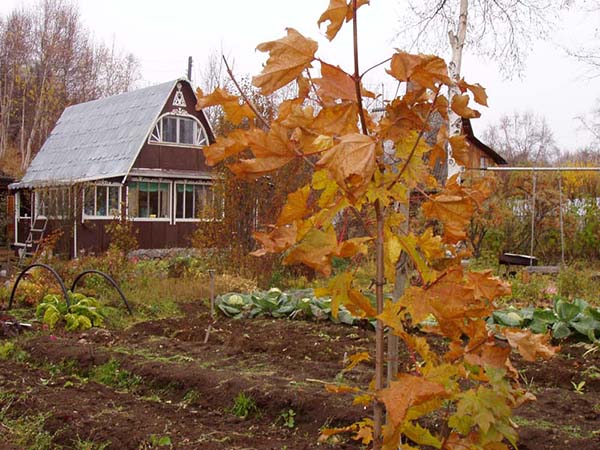
Content
- 1 How to care for your garden (trees and shrubs) in the fall to properly prepare for winter
- 2 Harvesting and storing
- 3 Top dressing in autumn
- 4 Autumn pruning
- 5 Eradicating the garden for the winter
- 6 Autumn whitewashing of the garden
- 7 Autumn water-charging irrigation
- 8 Shelter for the winter and mulching
How to care for your garden (trees and shrubs) in the fall to properly prepare for winter
Basic autumn garden work:
- to collect the harvest and lay it for storage;
- perform autumn feeding;
- carry out autumn pruning;
- if desired and necessary, to clean tree trunks from old dead bark, various mosses and lichens.
- remove plant debris from the site (you can both before processing and after);
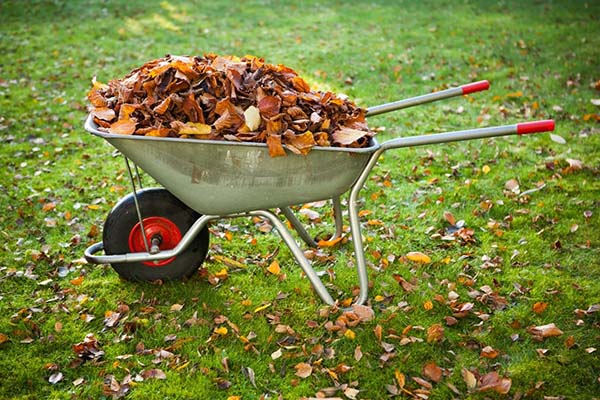
- to carry out the eradicating autumn processing of trees and shrubs from diseases and pests;
- whitewash tree trunks (always after processing).
- make autumn water-charging watering and dig up the ground in the near-trunk circles;
- shelter for the winter.
And now let's talk in more detail about each of the main autumn activities for the care of fruit trees, berry and flowering shrubs.
Video: how to care for a garden in autumn - preparing for winter
Harvesting and storing
You need to harvest vegetables, berries and fruit crops on time and correctly. The materials on our website will help you with this (on the collection time and storage methods):
- potatoes - when to dig and how to store;
- beets - cleaning time and storage rules;
- carrots - cleaning time and harvest storage methods;
- radish -when to dig and store properly;
- celery;
- sweet and bitter pepper;
- eggplant;
- horseradish roots;
- cabbage;
- garlic - when to clean and how to store;
- Luke;
- pumpkins - collection time and storage methods;
- pears;
- collection, drying and storage of rose hips;
- about the timing and methods of harvesting sea buckthorn;
- walnuts;
- watermelons.
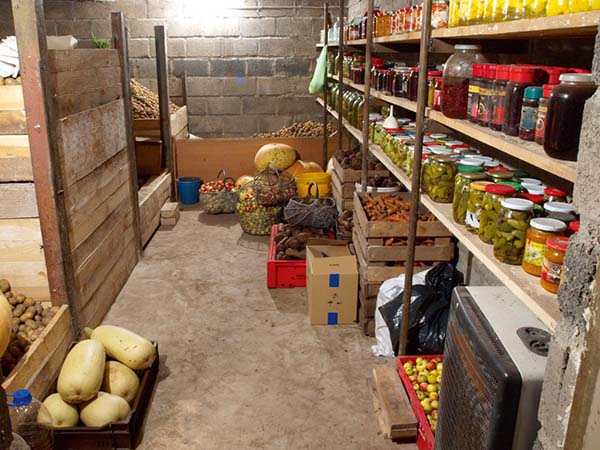
Top dressing in autumn
It would seem, why fertilize plants in the fall if they go into hibernation?
All summer, summer cottage cultures bloomed and bore fruit, which means they expended a lot of energy. It is the autumn feeding that will allow them to recover and endure the winter well (increase their winter hardiness).
Worth knowing! All fruit trees are fertilized in the fall in about the same way., so, for example, you can read with this material about the autumn feeding of the apple tree (for pear, apricot, plum, cherry and sweet cherry and other fruit trees, everything is the same).
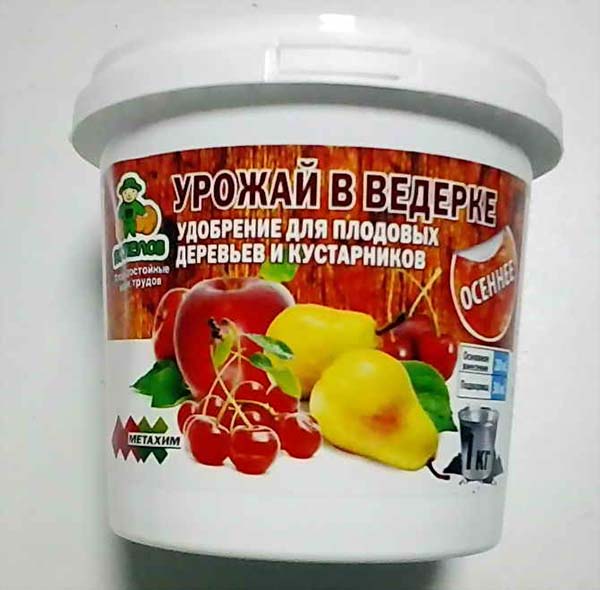
There are also articles on the site about the autumn feeding of various berry bushes — currants, raspberries, strawberry, blueberry.
Of course, do not forget about flowers, the sameroses, which are also desirable to fertilize before wintering.
Autumn pruning
It is recommended to prune all fruit trees in the spring, although in the fall, in principle, it is possible to prune stone fruit crops (pears and apple trees). But it is better to do this in the spring.
In any case, in the fall, you should carry out sanitary pruning of all cultures.
But the same berry bushes, for example, raspberries are cut in autumn (after harvest), currant and gooseberry, and grapes.
Almost always after harvest and sometimes in autumn cut strawberries.
Flowering shrubs are mainly pruned for the purpose of their more convenient shelter for the winter (the same roses, clematis andhydrangea).
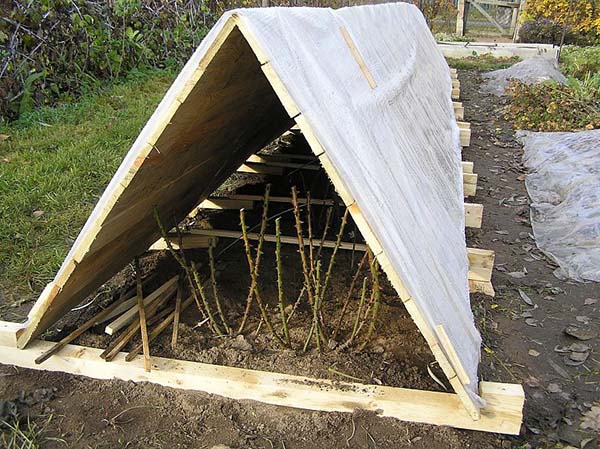
Eradicating the garden for the winter
This autumn event will allow you to revitalize your garden before wintering.
By the way! The site appeared a general article on when and how to eradicate diseases and pests from the garden in the fall.
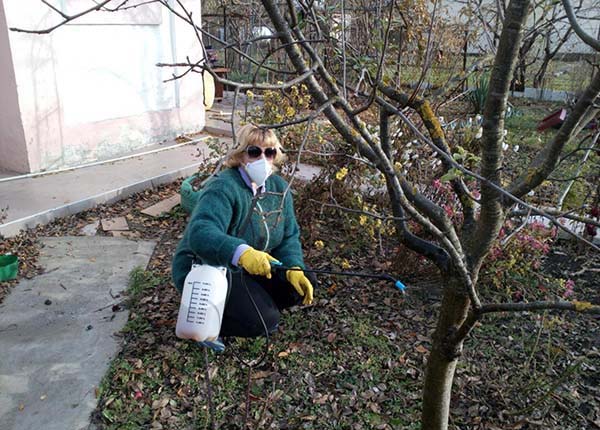
Note! If you carried out the autumn spraying of the garden from diseases and pests, then this does not mean at all that to spray in early spring you don't need it anymore. Autumn eradication spraying actually similar to the first early spring garden treatment (also called eradicating). And then you have to spend a few more spraying (2-3 is desirable for full protection).
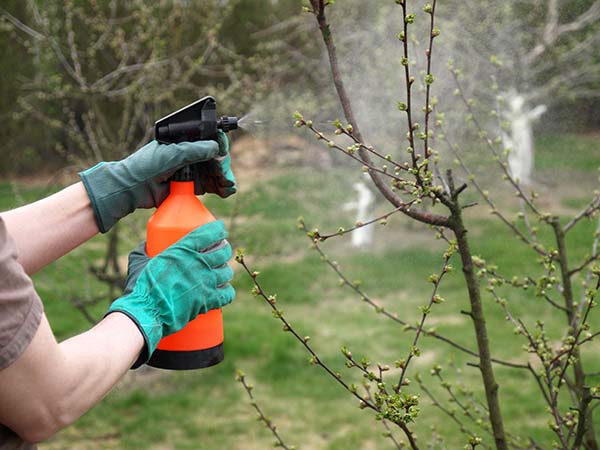
Autumn whitewashing of the garden
Remember! You need to whitewash trees in the fall, because whitewashing in the spring (April-May) does not make any senseapart from the aesthetic.
It's another matter if you whitewash the trees in February or early March. But is it real? Isn't it easier to do it in October?
Why whitewash trees?
To prevent frost damage (sunburn), cracks on the bark, which are formed due to temperature changes (plus-minus, plus-minus) in the transitional winter-spring period (in February-March).
What trees to whiten?
To be whitewashed all trees, especially young.
Advice! The site already has an article about when and how to whitewash fruit trees in autumn.
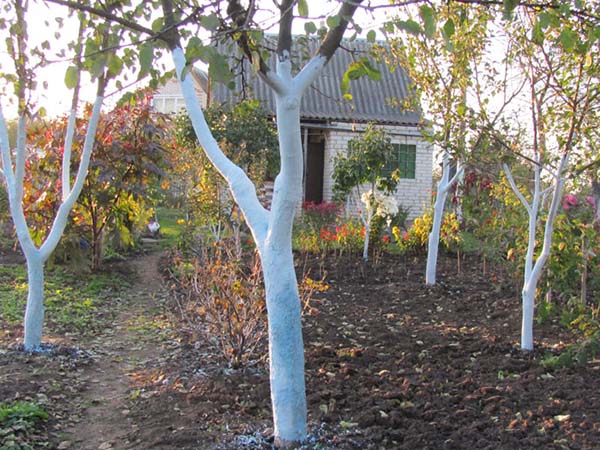
Interesting! There is a not unfounded opinion that very young seedlings smooth bark it is better not to whiten, but to wrap the barrel with white covering material (for example, spunbond ribbons). So you not only prevent sunburn, but also protect the seedling from rodents (more in the paragraph about shelter for the winter).
Autumn water-charging irrigation
Synonyms: "water-charging" or "podzimny" watering.
Autumn water charging is another useful (but not required) an agrotechnical measure that allows you to better prepare fruit trees and berry bushes for winter by "filling" them with moisture.
Why do plants need moisture in winter?
It's simple: it is believed that moist soil freezes less and has greater thermal conductivity, in other words, the heat from the lower layers of the soil will warm the roots of plants in the cold period.
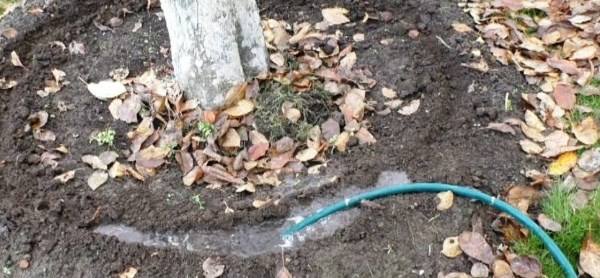
How long does it take?
- After falling leaves, on the eve of cold weather (at a positive temperature).
When is winter watering especially necessary?
- In case you have sandy loam soil and autumn does not indulge in frequent and heavy rains, and winter is not snowy.
It is worth understanding! Of course, if autumn is wet and cool, then you can completely do without water-charging irrigation.
How much water is required?
- You need to wet the entire earthen lump, which contains the root system of the plant (about 30-50 cm deep), i.e. from 20 to 200 liters (for small shrubs and large trees).
Advice! Naturally, you don't need to carry any buckets: take a hose and move it around the trunk circle (and first measure how many minutes it takes to get one 10-liter bucket. For example, if it takes 30 seconds, then 1-10 minutes will be enough).
And after watering (for example, the next day), many gardeners also advise loosen the soil in the near-barrel circle, because loose earth freezes less.
Of course, if your plants are on a good layer of sod or lawn grass just grows, then you don't need to dig anything up.
Video: what is water-charging irrigation and how to carry it out correctly
Shelter for the winter and mulching
There are many misconceptions on the topic of sheltering plants for the winter, so let's say right away: “Most adult plants do not need any shelter for the winter. ".
Note! The only exceptions are roses and grapesas well as some varieties hydrangea and clematis.
Another thing when it comes to newly planted or young plants (1-3 years old)... In this case, some insulation is really necessary, which, as a rule, is performed exclusively mulching them trunk circle.
Mulch creates the most favorable conditions for plants: protects the root system from freezing, retains moisture and protects against weeds.
Strawberries and it is always desirable mulch.
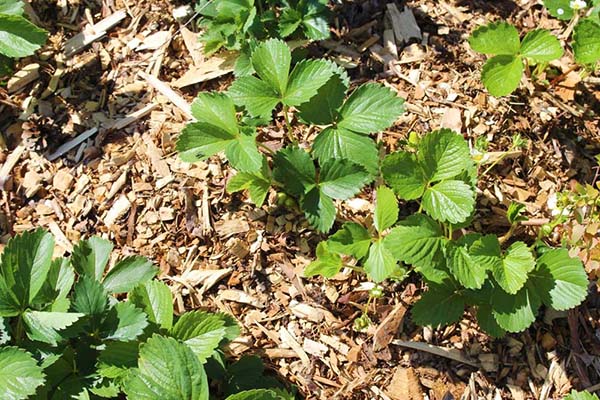
Almost any loose material can be used as mulch: peat, compost, humus, litter, conifer bark, sawdust, dry leaves.
The thickness of the mulching layer should be within 5-10 cm (sometimes even 2-3 cm is enough).
At the same time, some plants, for example, lavender can be dug up and stored at home in winter.
And here young fruit trees quite often suffer from gnawing of their bark by mice and hareswhy are they bole wrapped special ribbon or erecting protective structures.

Also for example thuja harbor in order to protect young and spreading plants from snow adhesion (because of which they can simply break) and prevent sunburn (this is especially true for thujas growing in the sun).
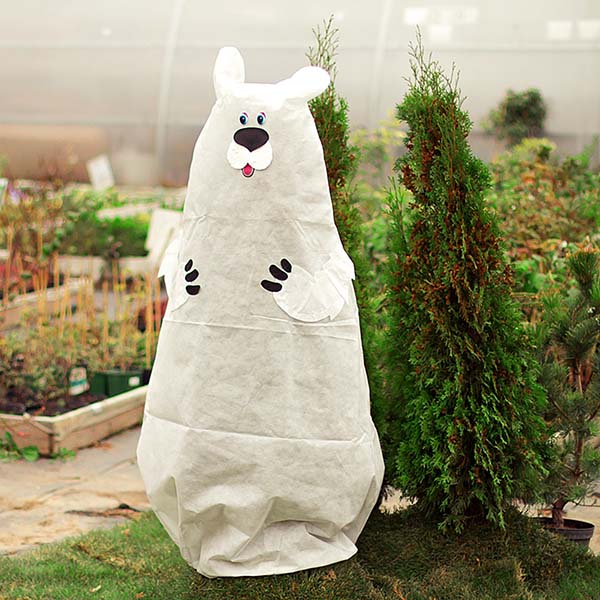
Video: how to properly cover plants for the winter
By the way! The site has separate detailed preparation materials various plants for winter: apple trees, pears, peach, apricot, cherries, barberry, honeysuckle, gooseberry, currants, strawberry, raspberries, grapes, blueberry, blackberry, roses, spireas, budley, daylilies, phlox, rhododendrons, lavender, astilbe, mock orange (garden jasmine), irises, clematis, lily, chrysanthemums, peonies, hydrangea, host, tui.
Dear summer residents, gardeners, gardeners and flower growers! Admit it, which of the above and described autumn garden work do you personally do?
Wish! If something is missing, be sure to write in the comments!
Video: preparing the garden for winter

